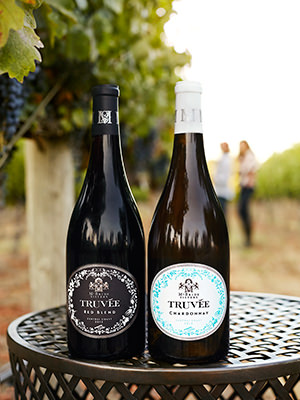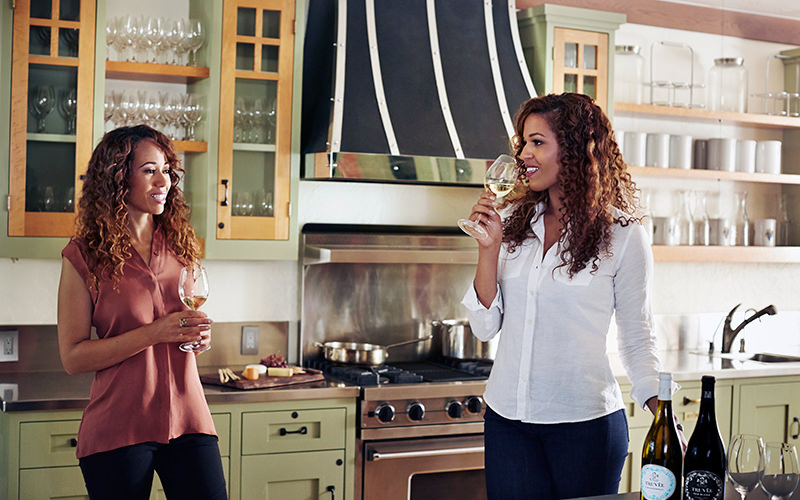Olivia Pope, the heroine of Shonda Rhimes’ hit show Scandal, is the first black heroine to grace the small screen in 40 years. But the importance of her performance has had a ripple effect beyond just increasing diversity in the television industry. Magnificent in her mastery of all those around her, Olivia Pope is also unique for her love of red wine. The glass she drinks from—the Camille Red Wine Glass—is now a Crate and Barrel bestseller, flying off the shelves at 20 times their pre-Scandal weekly volume.
And yet, even though Olivia Pope’s wineglass has become a household item, the wine that’s in it is still somehow not making it into those abundantly purchased glasses—at least, not in African American homes.
Only 25% of African Americans drink wine, as opposed to 34% of their white counterparts, and they are more likely to purchase sparkling or sweet wines, rather than the deep red vintages Olivia Pope imbibes. This may be due to the way wine is marketed—or rather, not marketed—to them. Though African Americans are 12% more likely to shop for wine online than their white counterparts, wine sellers and their marketers continue to refuse to reach out to the African American consumer.
Despite the fact that the African American population is growing, not only in numbers but in education and affluence, they are consistently forgotten by marketers—especially so by marketers of wine.
“I’ve never seen any (wine) advertising or marketing directed at African Americans,” Tony Harris, vice president of an African American wine tasting group in the East Bay told SF Gate. “This is clearly a missed opportunity.”
Despite the fact that the African American population is growing, not only in numbers but in education and affluence (black buying power was projected to reach $1.2 trillion in 2015), they are consistently forgotten by marketers—especially so by marketers of wine. “We’re the size of Canada, and everybody thinks we don’t have any money,” Michael LeBlanc, an African American brewery executive complained in 2013.
It’s a fact that’s not gone unnoticed by the owners of Truvee Wines, a new brand created by two half-sisters—Andrea and Robin McBride. The McBride sisters are biracial—they share an African American father, and both of their mothers are Caucasian. “Neither of us growing up had the experience of knowing people who looked like us,” Robin said, and that experience has followed them into their chosen business.

Amazingly, the sisters were unaware of each other’s existence for the first decades of their lives; Andrea was living in foster care in New Zealand after her mother passed away, and Robin was living with her own daughter in California when they first learned they were not only children. When they were finally reunited—by a letter that took four years to find Robin—they were shocked by how similar they looked. When Robin got off the plane, Andrea looked so much like her that Robin thought she was looking in a mirror. “It wasn’t until she moved that I realized I was looking at my sister,” she remembered.
They not only looked alike; they liked the same food and had the same taste in clothing. To this day, the sisters will show up to meetings wearing the same outfit. Andrea learned that she sometimes gave people dirty looks by seeing them on Robin’s face (“The McBride Scowl,” Robin called it, an inheritance from their father. “Fix your face,” they will whisper to each other).
It’s really ignorance that causes companies to market to blacks in a way that is “kind of hood.”
They shared other things too—values about the environment, about how to cook food, about the pleasures and importance of farmer’s markets. And there’s an intelligence that is common to them both, that seems to pass between them as they finish each other’s sentences.
Both sisters had grown up in newly developing wine regions: Marlborough, New Zealand, and Monterey, California. Andrea’s uncle was a grape grower, and she worked on his farm as a child. “Obviously there was a lot of wine, but I didn’t fall in love with wine until I met Robin,” Andrea says. “And then the stars kind of aligned, and started to make sense. We started to drink together, appreciate wine, learn about wine.”
They started out as importers, bringing boutique New Zealand wines to the U.S. and learning the business side of things. Eventually, they ventured into making wine on their own, with an ethos ingrained in sustainable farming and sustainable wine making.
It’s really ignorance that causes companies to market to blacks in a way that is “kind of hood,” says Robin. Marketers make assumptions about what blacks would enjoy, and then market them pink Moscato.
“There’s this perception that all people of color drink sweet wine,” Andrea picked up where her sister left off. “But if you have first time wine drinkers, it doesn’t matter if they are white or Chinese or black— you start drinking sweet. I’ve never seen someone who’s never drunk wine pick up a dry wine and say this is excellent. As you go along, your palette adjusts.” What you’re seeing are first time drinkers who happen to be African Americans, who will graduate to other varietals. Unless, of course, no one ever markets these other varietals to them.
But the race gap in the wine world extends beyond just marketing. African Americans don’t gravitate towards the making of wine either; just 1% of all farm operators are black, according to the 2012 U.S. Census of Agriculture, and there are only a few dozen black vintners across the country. It’s a tight-knit community, and a very supportive one, but it’s a small one.
“The simple answer is slavery,” Andrea says. “If you look back around 1860, we have 4 million slaves in America, which is the second largest colony in the world.” This ugly period was followed by the mechanization of cotton picking and great migration of African Americans out of the Jim Crow South and into the big cities. “I think the last thing people wanted to do was get into agriculture,” Andrea says.
Raising money is hard, but it’s even harder when you don’t look like the majority of the people who are doing the investing.
In fact, this narrative of blacks disconnecting from agriculture is part of the McBride family lore. The McBride sisters’ grandfather was a sharecropper. When their father, who was born in 1944, turned 13, his father told him and his siblings it was time to start working, picking and baling and loading cotton. “And our dad was just like hell no! That’s the last thing we’re going to do!” Robin remembers. “Our grandfather was a farmer, but my father and his siblings wanted to get as far away from that as possible.”
As for getting an investment from someone else, that represents other insurmountable complications. “People tend to invest in others who look like them, because they can relate to them,” says Andrea. “Raising money is hard, but it’s even harder when you don’t look like the majority of the people who are doing the investing.” One potential investor suggested that the sisters hire a white CEO. “The investor actually wanted us to white-wash ourselves, so he’d have more confidence in his investment,” Andrea recalled.
“There have been lot of infuriating things in our experience,” Robin agreed.
 The McBride sisters’ experience—that investors fund people who tend to look like them—is borne out by data. A 2010 study conducted by CB insights found that only 1% of venture capital backed founding teams were African American. Compare this with the data tracking the racial breakdown of senior investment teams, and you get a perfect match: 1% of them are African American. “There is evidence that venture capital markets are not race-neutral or race-blind,” William Bradford, former dean and endowed professor of business and economic development at the University of Washington Business School, told the Seattle Post-Intelligencer.
The McBride sisters’ experience—that investors fund people who tend to look like them—is borne out by data. A 2010 study conducted by CB insights found that only 1% of venture capital backed founding teams were African American. Compare this with the data tracking the racial breakdown of senior investment teams, and you get a perfect match: 1% of them are African American. “There is evidence that venture capital markets are not race-neutral or race-blind,” William Bradford, former dean and endowed professor of business and economic development at the University of Washington Business School, told the Seattle Post-Intelligencer.
A follow-up 2014 article in Elite Daily confirmed that the number hasn’t changed at all—blacks are still getting only 1% of venture capital. And for women, it’s even worse—less than 1%.
Despite being women of color, the McBride sisters made it work, and they see part of their contribution to the industry, beyond their wine, as opening the doors to other women and people of color who want to work in wine. And unlike other wine sellers and their marketers, Robin and Andrea make a point of marketing to professional people of color in addition to their other target demographics.
“We want to become a resource,” Andrea says, for people thirsty for good wine who want to go on a journey. “We are coming from a place of: wine is awesome, it’s fucking fantastic, it brings people together and it’s usually over food and you’re having a good time and there’s no drama. The more people are drinking, the better it is for the industry!” She said. “So why are you excluding people?”
